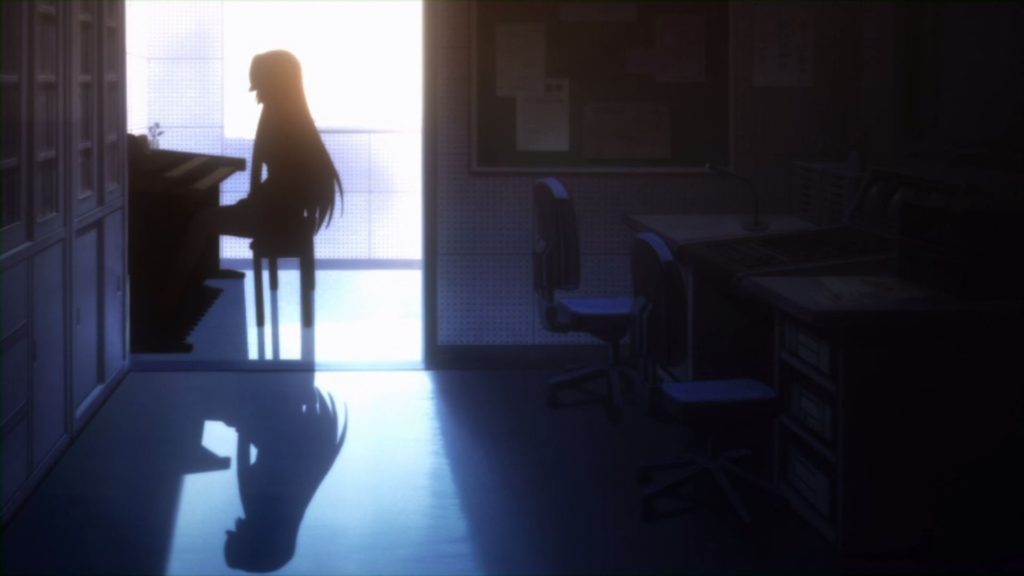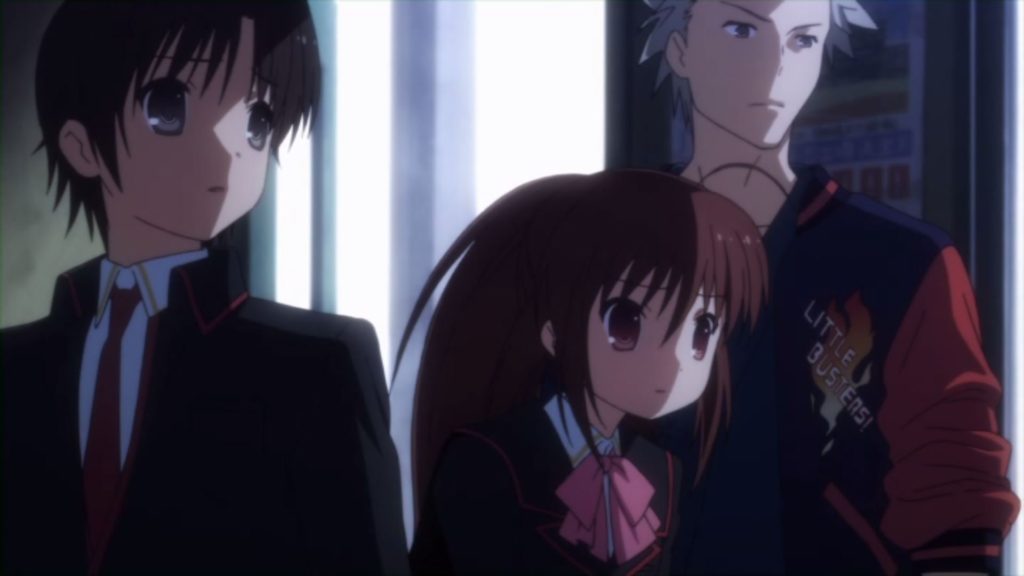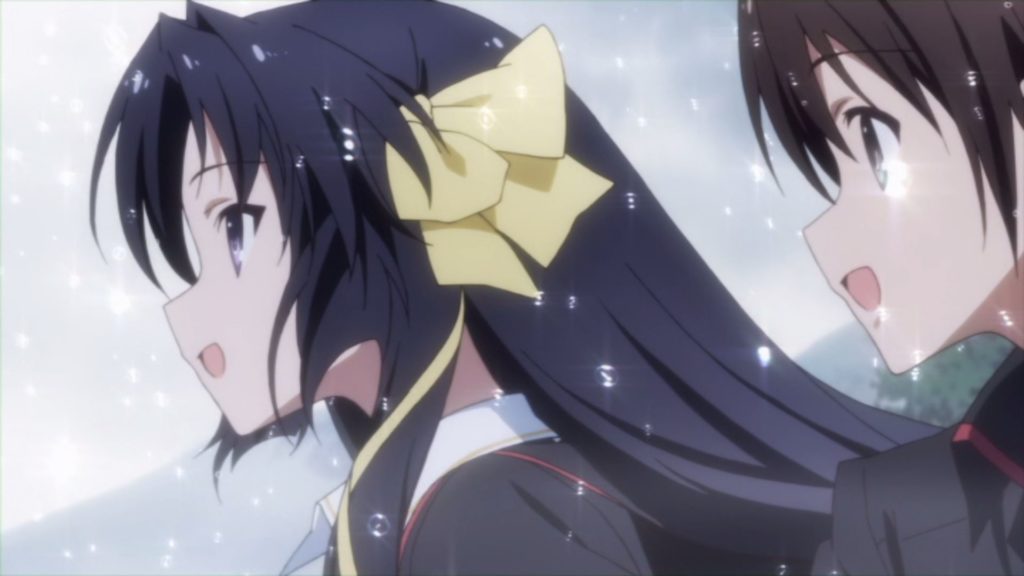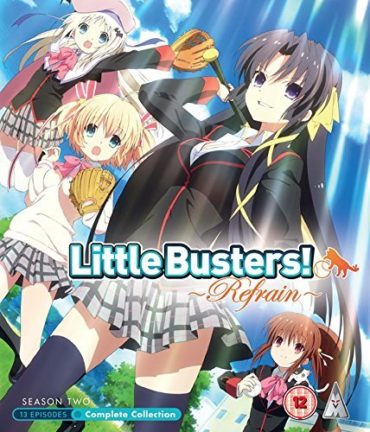Little Busters Refrain Review
“If I meet you, I’ll lose you someday. Losing people is sad, and it scares me, but the joy of meeting you is stronger than the sorrow of loss” – Riki Naoe
At last, the baseball team of the Little Busters has reunited, with many new friends amongst the old ones. However, the peace couldn’t last forever. Riki Naoe soon learns a stunning truth about the world, a truth that will truly change everything as he soon realises that a dream must come to an end, and that which has stopped must once again start to move.
After the original series of Little Busters carefully set up the pieces, the 2013 follow-up season Little Busters Refrain finally sets the story in motion, in a series that, whilst flawed, manages to surpass its predecessor and deliver a satisfying conclusion to the franchise.
After a full season dedicated to introducing the cast, I went into Refrain expecting it to put the plot first, but that’s not really the case, with just as much focus being put on character as the last series, which works even better than it did before. The opening three episodes finally give some depth to Kurugaya, someone whom I thought went underutilized in Season One, and this arc is absolutely wonderful, definitely being one of the highlights of not only Refrain but the franchise as a whole. After that, the focus shifts to the original Little Busters team: Rin, Kyousuke, Masato and Kengo, which is appreciated as I felt they also lacked any kind of development or depth in the original season. However, this focus comes at the price of totally dispensing with the rest of the cast. I don’t mean everyone else is relegated to a background role, I mean everyone we were supposed to have grown to love over the course of the initial season stops showing up at all. I found this to be a little problematic as all the characters that made me enjoy the first season, such as Kud and Komari, just up and disappear, and this made me enjoy watchingRefrainless than the original series, even if the disappearances have justification in the narrative.
Another reason why I don’t find Refrain as enjoyable is that I still don’t find Riki to be a great protagonist. He’s kind-of bland, and he struggles to carry the show as it becomes more focused on him rather than the team. Even though I can’t say I care much for him, one aspect of Refrain I do like is the fact it doesn’t waste any time in setting up Riki in a relationship. Most anime are content to drag out fairly obvious romances until the very end of a series, which is pretty frustrating as rarely see two characters actually together as a couple, so it’s refreshing to see Riki enter into a relationship quite early on, which becomes quite an important element in the grand scheme of things, especially in the part focused on the girl, whose identity I won’t spoil here, but if you’ve seen Season One, you can probably guess who I mean.
One complaint I held about the first season ofLittle Busterswas the massive tonal shifts, snapping from serious drama to light-hearted goofing off at the drop of a hat. However, after watchingRefrain,I’m starting to regret those comments a little. At half the episode count, Refrain doesn’t have the episodes to waste, so opts for pure drama for the most part, which I found it to be rather tiring. It was difficult to watch in long sessions due to the sheer mountains of melodrama on display, to the point where I was actually wishing for a mediocre but fun episode like we had before. The structure of Refrain doesn’t allow for it, and at only one cour, I can see why they’d have to trim the fat, so to speak, but, like the missing characters, this over-emphasis on unending drama saps away the fun factor that the original had, making the middle portion of Refrain a chore to watch sometimes.
As for the story itself, well, there is one, already putting it head and shoulders above the first season in that regard. As I mentioned previously, Refrain is incredibly character-centric, but once the plot kicks in around the Episode 10 mark, it suddenly takes precedence, and this is when I found the show to finally came into its own, as we begin to uncover all the unresolved mysteries. The only real complaint I have about this is the way in which the mysteries are revealed. Instead of drip feeding us answers over the course of the series, the audience is left in a state of mild confusion up until the series is almost finished, when we’re suddenly told the answers. It would have been a lot better if the audience had enough information to piece together what was going on as the series progresses, rather than being left in the dark until the eleventh hour before having everything explained to us, although I’m willing to accept that perhaps it was possible to guess at what was happening, and I didn’t pick up on the hints.
Perhaps the crowning achievement ofLittle Busters Refraincomes in its ending. If you ask me, those last three episodes are pretty much perfection. I won’t lie, I cried. Multiple times. It is hard to talk about without spoiling, but despite my being rather lukewarm on the middle, the ending had me absolutely enraptured. I’m not sure a sequel could do anything but ruin it, but I guess I’ll have to wait and see how that actually pans out once the OVA follow-up is released.
As you may well expect from a sequel that broadcast in the same year as the original, Little Busters Refrain offers little improvement in animation from Season One. Despite that, some of the situations in the sequel to give J.C. Staff room to stretch their creative legs, with the highlight probably being the beautiful snowstorm from the series’ opening arc.
All of the voice cast from Season One return, for better or worse, although a lot of the talented standouts I loved so much from the first season, such as Tiffany Grant and Tia Ballard, sadly don’t appear too often due to story-based circumstances. Shannon Emerick, who voices the protagonist Riki, is given more emotional scenes to work with that allow her to demonstrate a bigger vocal range, but she remains not too amazing on the whole.
Manabu Miwa, PMMK and Magome Togoshi return to provide music, this time going for a low-key and melancholic soundtrack that serves to highlight the many emotional moments that punctuate the climax. The only aspect that’s a let-down musically is the opening, “Boys be Smile” by Suzuyu, which is so forgettable it makes the original opening seem memorable by comparison. I did quite like the main ED, however, “Kimi to no Nakushi Mono” by Ayaka Kitazawa, so it’s a shame we rarely hear it, as the ED is often skipped in favour of overlaying the credits onto the show, to squeeze more into the running time.
In Summary
It isn’t perfect, but Little Busters Refrain does a fantastic job of capping off Season One with an emotional finale that won’t leave a dry eye in the house.







